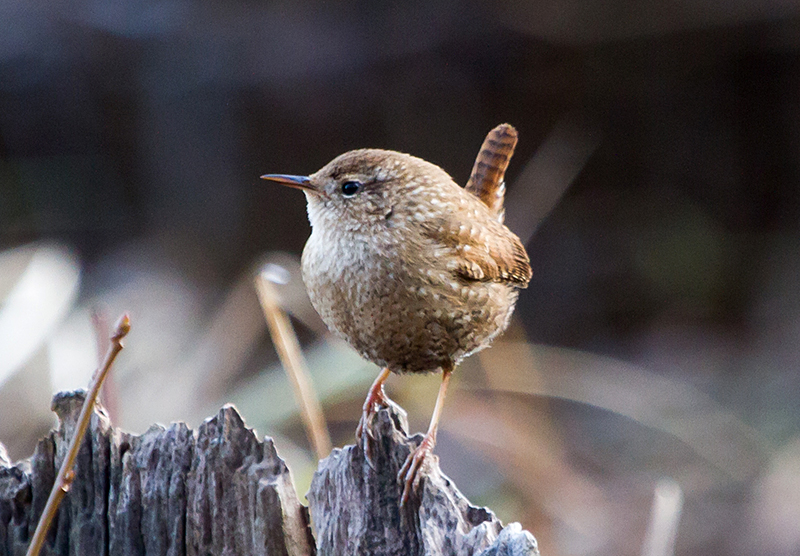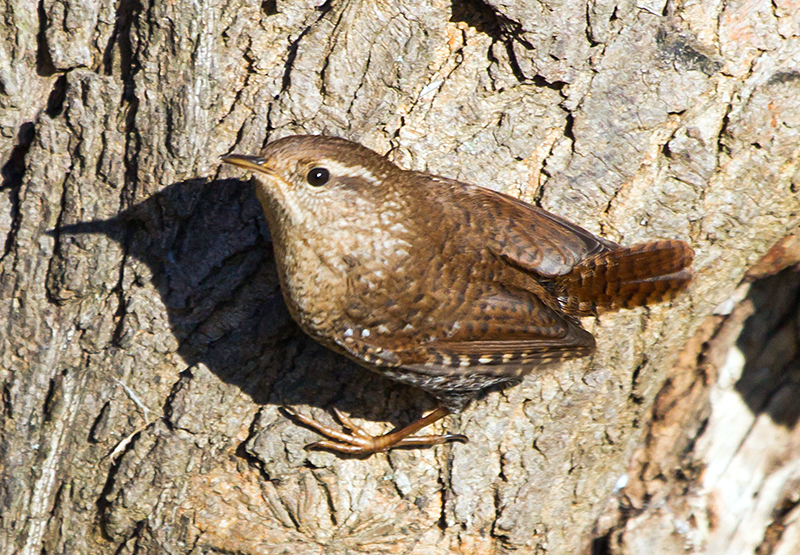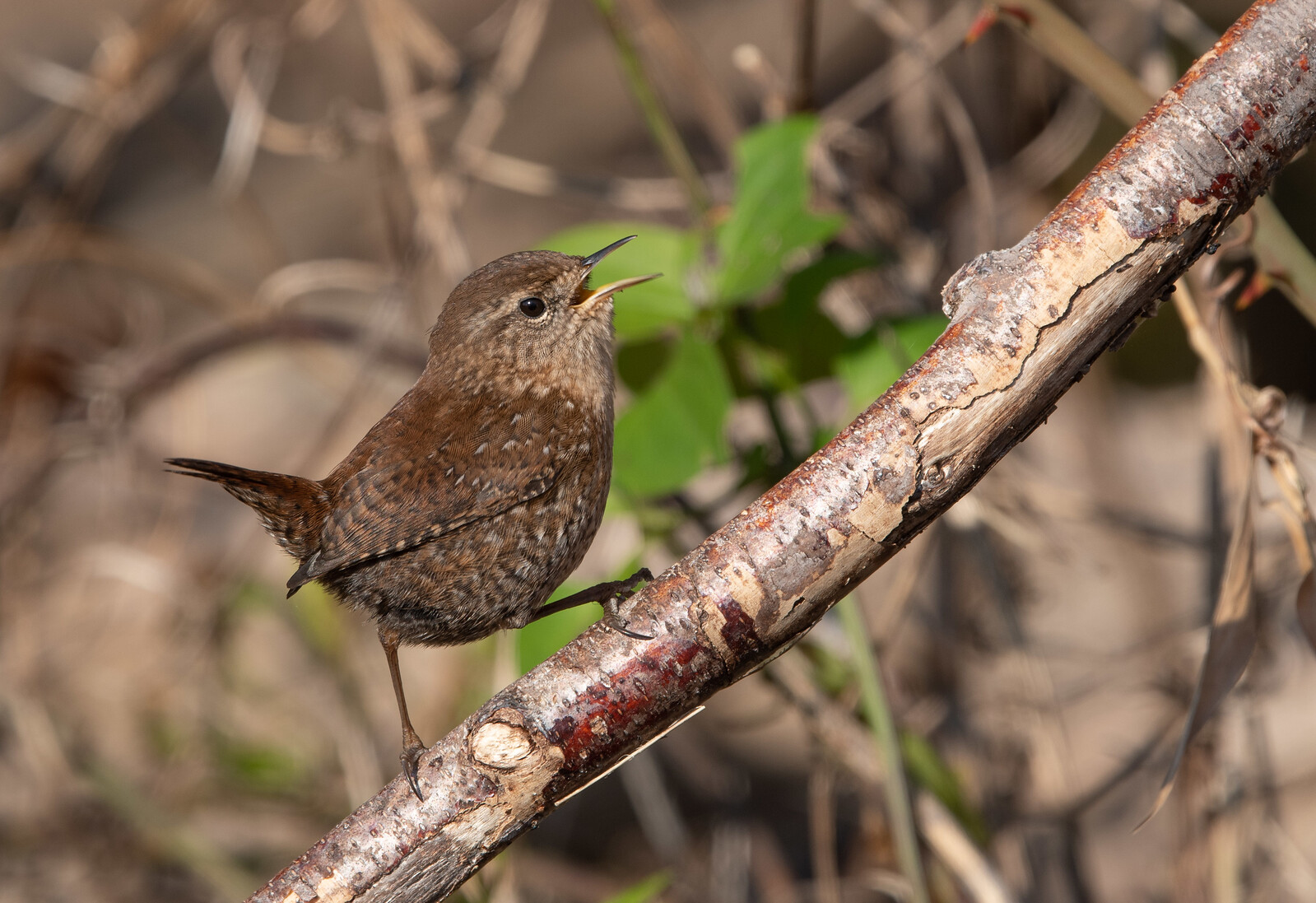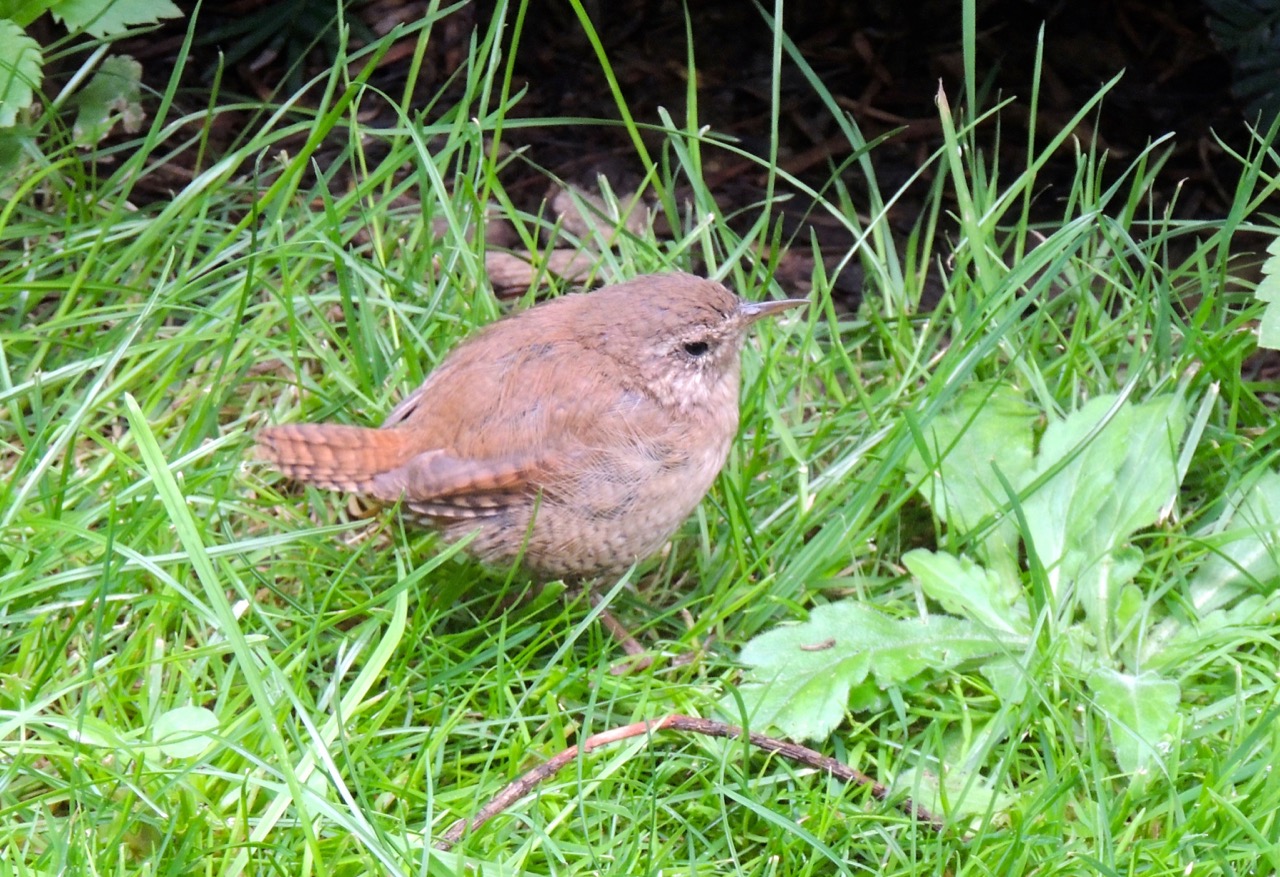| Early Spring Date: | March 1 |
| Late Spring Date: | May 10 |
| Best Dates to See in Spring: | March 19 - April 20 |
Spring: Some Winter Wrens spend the winter in the Washington metro area, and other pass through during migration. Most breed in Canada and the northern states. They are not uncommon at Monticello Park, but they do not often allow you to have an extended look, assuming you can see one at all. The best time to look for them at Monticello is during the last two weeks of March and the first week in April.
Fall: Winter Wrens begin to arrive at Monticello in early October, and they are more common by the middle of the month.
Where to See Them in the Park

Winter Wrens skulk in the underbrush and usually are seen somewhere near the stream. When they pop into the open, it is usually for a moment or two before they dive under a log or behind some leaves.
Physical Description


Winter Wrens are one of the smallest bird species in the Washington Area. They are the smallest of the three wrens seen at Monticello, measuring only 4 inches. They are little dark brown birds with a sawed-off tail that is often cocked. The sexes are similar, and spring plumage is similar to fall plumage.

The size and behavior of the bird are better aids for identification than the plumage. They possibly could be confused with House Wrens, but most Winter Wrens have left before the House Wrens arrive.
Vocalizations

The song of the Winter Wren is long and energetic. Parts of the song are high-pitched. The call is two or more chirp notes.
Hear the vocalizations of the Winter Wren.Notes

The Winter Wren used to be considered part of the same species as the bird Eurasians simply called Wren. All members of the wren family live exclusively in the New World, except for this one species which in 2010 was renamed the Eurasian Wren. At the same time, the Winter Wren in North America was split into two species, with birds in the west now called Pacific Wrens.
Origin of Names
Common Names: Winter from its winter range in parts of North America. Wren from the Anglo-Saxon wraenna, which means wren.
Genus Name: Troglodytes means cave dweller, from their habit of diving into holes for cover.
Species Name: Hiemalis means of winter.
Winter Wren video footage
Return to the Index
